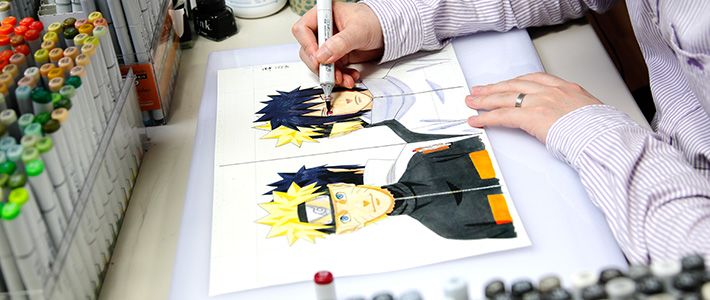
Contemporary Culture Going Global
Farewell, Naruto: The Curtain Closes on the World’s Best-Loved Ninja
Culture- English
- 日本語
- 简体字
- 繁體字
- Français
- Español
- العربية
- Русский
A Final Battle Set from the Start
Naruto is an exceptionally long-lived manga series. Its serialization began in 1999, when creator Kishimoto Masashi was just 25 years old. In the 15 years that have elapsed since then, Kishimoto has created an entire life for his protagonist—Uzumaki Naruto, a student at a ninja academy whose mediocrity in his studies belies his deep inner capabilities.
“When I first created Naruto,” says the veteran artist, “I was just setting out myself to become a mangaka, and I projected my own fierce desire to be recognized by those around me on my character.”
At the time, of course, there was no way of knowing that this character would gain incredible recognition around the world over his decade-and-a-half-long run.
“With a magazine like Shōnen Jump,” explains Kishimoto, “you produce three issues’ worth of your material that’s up for consideration, and the editors decide whether to publish you based on that. If you make it past that stage, you’ve got about two months until your series kicks off in the magazine.” While this is the answer every manga creator hopes to hear, in general, it means only that an order has been placed for a short story arc. “The writer doesn’t have much time to prepare for those weekly deliveries and really polish the work. Usually, you don’t need much more than one or two full-length bound volumes worth of material.”
“When I first met the editors,” he continues, “I only knew one thing about my manga: that I wanted Naruto and Sasuke [his rival since childhood] to end the work with a climactic confrontation.”
 Uzumaki Naruto, at right, and Uchiha Sasuke begin the series as uneasy friends and rival students at the same ninja academy. In the end, though, Sasuke leaves for more sinister pursuits, leading to his final battle with Naruto. (Stills from The Last: Naruto the Movie. © Kishimoto Masashi, Scott/Shūeisha, TV Tokyo, Pierrot; courtesy 2014 Naruto the Movie Production Committee.)
Uzumaki Naruto, at right, and Uchiha Sasuke begin the series as uneasy friends and rival students at the same ninja academy. In the end, though, Sasuke leaves for more sinister pursuits, leading to his final battle with Naruto. (Stills from The Last: Naruto the Movie. © Kishimoto Masashi, Scott/Shūeisha, TV Tokyo, Pierrot; courtesy 2014 Naruto the Movie Production Committee.)
Battles and Beasts on a Grand Scale
Naruto wrapped up with its 699th and 700th written installments, carried back-to-back in the issue of Shōnen Jump that went on sale on November 10. The story Kishimoto has told over the past 15 years has been an epic one.
Naruto is set in the world of the “Five Great Shinobi Nations.” Uzumaki Naruto hails from Hi no Kuni, the “Land of Fire”—one of the five nations named for classical elements. Each of these nations has “hidden villages,” settlements home to schools for ninja, where they master the mystical powers that they wield in battle. Naruto is a student at the academy in the settlement of Konohagakure, where he dreams of one day becoming the hokage, the master ninja who leads and defends the village. He is not a particularly dedicated student, though, failing his graduation exam numerous times before finally making it to the lowest genin ninja rank. Placed in a ninja team headed by the elite warrior Hatake Kakashi, alongside his rival and eventual enemy Uchiha Sasuke and his love interest Haruno Sakura, Naruto sets out on the long and hard path to maturity.
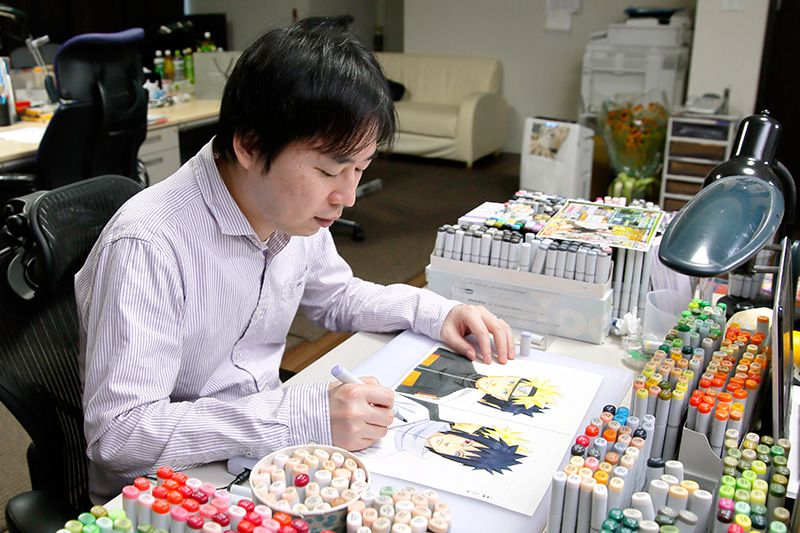 Kishimoto at one of his two desks—this one where he does his pen coloring. Behind him is a bank of six desks where his assistants do their work.
Kishimoto at one of his two desks—this one where he does his pen coloring. Behind him is a bank of six desks where his assistants do their work.
When summed up like this, it comes across as a fairly standard bildungsroman. But the sheer number of characters that appear over the story arc, their strongly individual characters, and the vibrant range of ninjutsu techniques they display in their battles make this a tale that gains complexity and depth as the episodes pile up.
Naruto himself has a dark secret: the presence within him of a powerful, monstrous nine-tailed fox, whose essence was sealed within him by his father—who lost his life in the process—when Naruto was just an infant. The five nations of this world once sought to control these giant beasts as a way to gain military supremacy, but they have now come to rest in human vessels scattered throughout the lands, producing an uneasy balance of power.
“The entire story of these tailed beasts started out as a simple way for me to get the fox into my manga,” says Kishimoto. “I loved Godzilla. I just wanted to draw a monster—something big that I could place in a battle. That’s why I decided to introduce the kuchiyose no jutsu, the summoning skills that let ninja call forth the weapons they need, or call a creature to their side to aid them in a fight. My intent from the start was to bring forth gigantic beings with these skills.”
A World Richly Populated with Characters
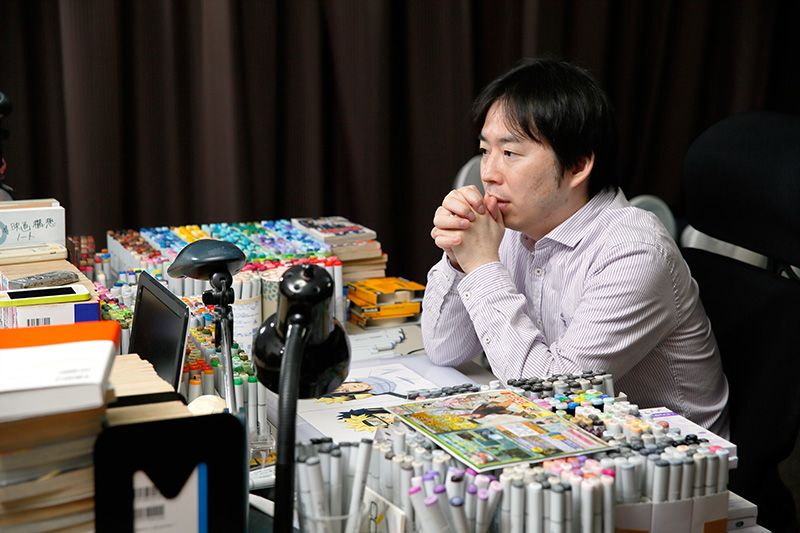 Kishimoto Masashi: Born in Okayama Prefecture in 1974. Won the Hop Step Award for his debut work, Karakuri, in 1995. The first single-issue Naruto work appeared in Akamaru Jump in 1997. Two years later, in 1999, the series Naruto began. It would run for 700 installments, finishing up in the late fall of 2014, just after his fortieth birthday.
Kishimoto Masashi: Born in Okayama Prefecture in 1974. Won the Hop Step Award for his debut work, Karakuri, in 1995. The first single-issue Naruto work appeared in Akamaru Jump in 1997. Two years later, in 1999, the series Naruto began. It would run for 700 installments, finishing up in the late fall of 2014, just after his fortieth birthday.
Over the 15-year run that Naruto enjoyed, its creator constantly worked to bring new depth to its pages. What did Kishimoto have in mind as he breathed life into the countless characters in the series?
“Once I feel I’ve written everything there is to write about a character, my approach is to make that one vanish from the story, never to come back. But that’s just an ideal. As I wrote Naruto, I found myself really caring for the characters I created, and I wanted to bring even more detail to their lives on the page. I’m afraid I tended to write even parts that the story didn’t require with great care—which was one factor making the series last as long as it did.”
Kishimoto notes that this approach impacted his weekly work schedule, as he constantly spent more time than expected to infuse the characters with realism and natural emotion.
And this was a process he repeated too many times to count. When asked how many characters he wrote for the Naruto universe, he pauses and then laughs: “You know, I have no idea at all.” Some of the characters that have resonated most with him, in addition to the obvious picks of Naruto and Sasuke, are Haku (a fair-faced young ninja who has gone rogue and left his homeland behind) and Jiraiya, an acclaimed warrior who takes on Naruto as his final student.
“You might describe Haku as a guide to Naruto, who inspired him when it came time to select his nindō, or the personal belief that forms the basis for his life as a ninja. Jiraiya, meanwhile, despite being a master to Naruto, was a terrible ninja, ignoring the ‘three prohibitions’ against drinking, womanizing, and pursuing money. He’s one character who remains very vivid in my mind.”
The Blond-Haired, Blue-Eyed Ninja
So why ninja in the first place? Kishimoto notes the inspiration of Sasuke, an anime series based on the manga created by Shirato Sanpei. But what really inspired him as a manga artist, he says, was Toriyama Akira’s Dragon Ball. In any case, he says, he had little desire at the beginning to create a story that fit some standard “ninja manga” mold.
“I had a sort of defiant attitude from the outset—this idea that there was no need for a Japanese writer to do a story on something so Japanese as the ninja. I mean, look at my protagonist: he’s got blond hair and blue eyes. Sure, shinobi means the art of stealth, but I never thought this was a reason to cloak my main character in shadow. He wears an orange outfit, behaves flamboyantly, steps forward and proclaims his name. I wanted to create a ‘pop’ manga that turned standard concepts of ninja on their heads.”
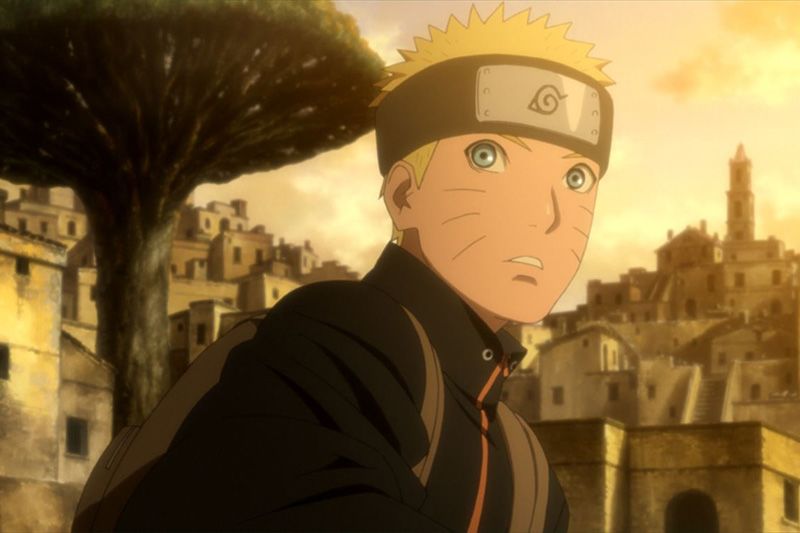 Naruto, the “blond-haired, blue eyed ninja,” has won popularity and fame in the domestic market and around the globe. Kishimoto wrote a total of 700 episodes, filling 71 full-length print volumes that have sold more than 130 million copies in all in Japan as of November 2014. Including foreign sales, including 12 million volumes in North America and 17 million in France, Naruto broke the 200 million mark in September 2014. (Image from The Last: Naruto the Movie. © Kishimoto Masashi, Scott/Shūeisha, TV Tokyo, Pierrot; courtesy 2014 Naruto the Movie Production Committee.)
Naruto, the “blond-haired, blue eyed ninja,” has won popularity and fame in the domestic market and around the globe. Kishimoto wrote a total of 700 episodes, filling 71 full-length print volumes that have sold more than 130 million copies in all in Japan as of November 2014. Including foreign sales, including 12 million volumes in North America and 17 million in France, Naruto broke the 200 million mark in September 2014. (Image from The Last: Naruto the Movie. © Kishimoto Masashi, Scott/Shūeisha, TV Tokyo, Pierrot; courtesy 2014 Naruto the Movie Production Committee.)
This approach has paid off in tremendous popularity for Naruto in Western markets. The manga have been translated and sold in more than 30 countries worldwide. In France, Naruto sits perennially atop the comic popularity rankings. All of this has come as a surprise to the creator.
“Early on, I joked that I’d like to see Naruto make it big overseas. But I never expected that foreign readers would get into it like they have. It was only after the work entered serialization that I realized how attractive the ninja concept was to the global audience.”
Part of the appeal of Naruto, though, lies in the way it goes beyond a simple ninja comic to reveal a sweeping fantasy universe like those created by beloved works of Western fantasy literature. Many fans, both in Japan and abroad, have seen parallels between Kishimoto’s creation and the Harry Potter tales by the British author J. K. Rowling.
Kishimoto states that any such parallels were entirely accidental. “I’ve never even read the Harry Potter books. When I started getting fan mail that said my character reminded them of Harry, though, I started to wonder, and I had a look at the first movie in the series. Then it made sense. You’ve got Harry, Ron, and Hermione, learning together at an academy for magic. This was somewhat like Naruto, Sasuke, and Sakura in my work.”
Saving Romance for the Big Screen
Looking back on 15 years of nonstop Naruto, what does Kishimoto see as the central themes he hoped to deliver to his readers?
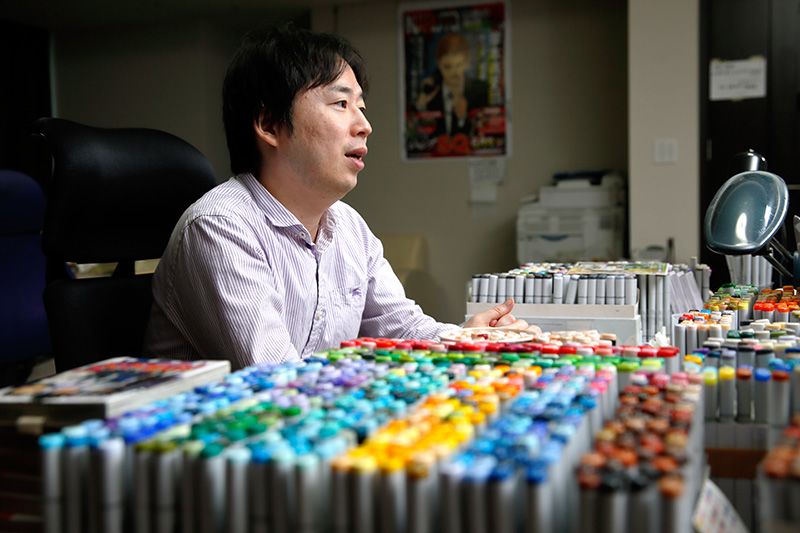 During his manga’s 15-year run Kishimoto became a father. In the comic’s final installment, Naruto, too, has two children of his own.
During his manga’s 15-year run Kishimoto became a father. In the comic’s final installment, Naruto, too, has two children of his own.
“Well, every reader is going to approach the work in a different way, so as its creator, I don’t really want to push a certain idea on them. But if I had to say, I guess it would be the way in which Naruto started out with no respect from those around him and grew into the sort of man who earned that respect from his friends. In the end, this character was one who, deep down, had qualities deserving of recognition. Rather than describing the story arc as the way he changed, it might be better to say that his surroundings changed as he grew. Those who started out not wanting to admit his worth respected and honored him by the end.”
Episodes 1 through 699 of Naruto cover the span of the main character’s life “from age 12 to 17 or so,” says Kishimoto. But in episode 700, the last one, we leap ahead in time. Naruto and Sasuke are both fathers with families of their own.
The events of the intervening years are covered in The Last: Naruto the Movie, a full-length animated feature that hit Japanese theaters on December 6, 2014. Kishimoto himself signed on for a supervisory role in this film’s production.
“I didn’t originally intend for there to be a movie about these years in Naruto’s life. But when we got the proposal and I saw a draft script for it, it was great. It was a movie I wanted to see, which meant that my readers would want to see it as well, I thought. I’ve never been the sort of artist to draw romance into my work, but this movie was a chance to include just those things that I never included in Naruto as a manga.”
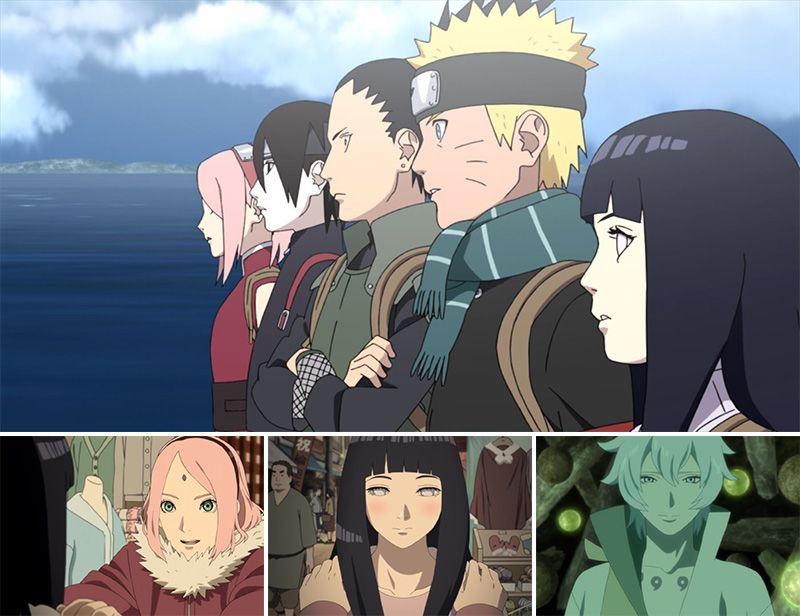 The tenth film in the series portrays aspects of the Naruto world that never made it into the written series. Haruno Sakura, the object of Naruto’s unrequited affections (bottom left), and Hyūga Hinata (bottom center), who longs for Naruto in turn, play major roles, as does one new character: the foe Ōtsutsuki Toneri (bottom right), a central figure in the final film. (Images from The Last: Naruto the Movie. © Kishimoto Masashi, Scott/Shūeisha, TV Tokyo, Pierrot; courtesy 2014 Naruto the Movie Production Committee.)
The tenth film in the series portrays aspects of the Naruto world that never made it into the written series. Haruno Sakura, the object of Naruto’s unrequited affections (bottom left), and Hyūga Hinata (bottom center), who longs for Naruto in turn, play major roles, as does one new character: the foe Ōtsutsuki Toneri (bottom right), a central figure in the final film. (Images from The Last: Naruto the Movie. © Kishimoto Masashi, Scott/Shūeisha, TV Tokyo, Pierrot; courtesy 2014 Naruto the Movie Production Committee.)
Preparing for the Next Career Stage
Kishimoto Masashi turned 40 on November 8, 2014, just as he put the finishing touches on his 15-year series. At this double milestone in his life, he looks back and says: “Ten years have passed since I got married, but my wife and I have yet to go on a honeymoon. I’d like to go travel somewhere for a while now.” While he intends to treat this as a well-earned vacation, it sounds like it may not last for long. “I have no interest in jumping right into a new series right away, but I do think that living a life without deadlines is going to make me fidget.”
Next up on Kishimoto’s work calendar is a special, limited Naruto series that will run in the Shōnen Jump weekly in the spring of 2015. The deeply populated universe he has created seems to offer plenty of characters and storylines to mine for this sort of additional material. But the author is more interested in striking out in entirely new directions.
“Even while on vacation, I won’t be entirely idle. I carry notebooks with me and I’m always writing down ideas in them. I want to keep writing. Once I’m ready to go—once I’ve decided to write something new—I’ll get up to full speed right away, I think. I haven’t lost my passion as a mangaka.”
(Based on a November 17, 2014, interview in Japanese. Interview photos © Yamada Shinji.)movie anime manga entertainment Naruto Kishimoto Masashi ninja Sasuke